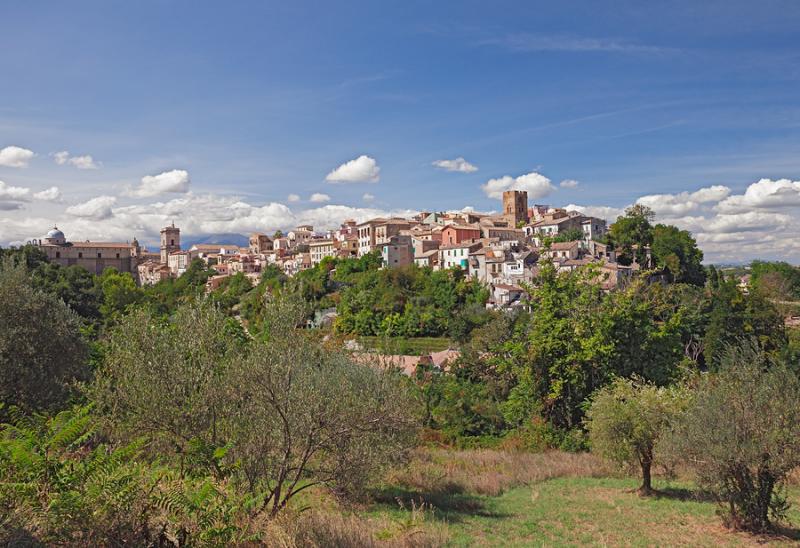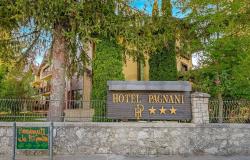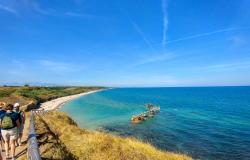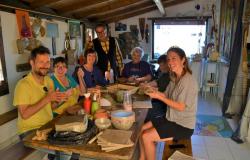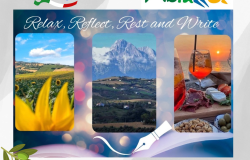Italy attracts over forty-three million visitors each year* and over four million of these visit the Vatican City. In 2005 over twenty-three thousand tourists descended upon Saint Peter Basilica in one day, setting a new world record. But there are other sights of religious importance that don’t attract the same size of crowds but can offer a really special experience to visitors.
Just two and a half hours drive out of the capital sits the lively medieval town of Lanciano, its turreted walls and narrow streets make it one of the most important and well preserved old towns in Italy’s Abruzzo region. Lanciano’s churches are superb examples of devotion and religious art, add to this the host of inexpensive hotels and apartments and the town becomes an ideal place for a weekend break.
For the traveller wanting to incorporate a church with their cappuccino, the town has a wealth of attractions, all within walking distance of each other. Towering above Piazza del Plebiscito, the town’s main square, is the Cathedral of the Madonna del Ponte, built along a precipice in 1619 by Michitelli. Inside is mostly clad with marble, making it a cool welcoming space out of the sun; ideal for a few minutes quiet contemplation and prayer. The cathedral houses a Byzantine statue portraying the Madonna, thought to have been rescued from the iconoclast controversies in the eighth century.

Cathedral of the Madonna del Ponte
Literally twenty paces from the cathedral is the church of San Francesco and home of the Eucharist Miracle. Built on the site of a pre-existing seventh century church, it has a less than impressive façade, and sadly the interior fares no better.
However, each year thousands of people make the pilgrimage here not to gaze up at lavishly painted frescos, but to look at the silver and glass ornate reliquary housing the remains of the eight century miracle. Two silver angels kneeling in devout prayer watch over the monstrance, made in Naples in 1713.
The miracle occurred in the eighth century when a Basilian monk questioned the real presence of Jesus in the Holy Host, as the words of the consecration were pronounced, the monk saw the bread turn into flesh and the wine into blood.

Eucharist Miracle - San Francesco Church Lanciano
It is best to plan your visit in advance, the full tourist coaches arrive just before midday and the church is used each morning for prayers, making an ideal time to visit around 10.30 am. The church also has a visitor’s centre, souvenir shop and twice a day opens up for a walk through the remains of the original church, complete with faded frescos and priest holes.
After a well-earned espresso and gelato at any of the small café’s nearby it’s time to escape the oppressive Italian midday sun. On Largo dell’Apello, a few minutes’ walk through the shaded alleyways is the Museo Diocesano, (the diocesan museum). Containing the most important collection of sacred art in central Italy, the museum makes for a fascinating way to spend an afternoon.
Divided into six rooms, and housed in the seventeenth century Archdiocese headquarters, it’s a real feast for the eyes. You really need to make the effort to give yourself enough time to enjoy the wealth of artifacts the museum has to offer.
Run by a skeleton staff, you are left to wander between the exhibits at your own leisure: be sure not to miss Cristo Portacroce by Giorgione (1478-1511) one of my personal favorites.
Other treats comprise of collections of sacred vestments, including the tissues containing the liturgical vestments embroidered with gold thread that belonged to Archbishop Francesco Maria de Luca. There’s a stunning selection of chalices dating from the thirteenth to the eighteenth century, and silver processional crosses made by the world famous Nicola da Guardiagrele.
Lanciano is an easy town to navigate, the grid like structure means it’s virtually impossible to get lost. In the evenings there’s an abundance of restaurants that open their doors, enticing you inside with the aroma of traditionally prepared dishes. What better way to end the day?

The Church of Santa Maria Maggiore
The following day, I suggest a visit to the church of Santa Maria Maggiore, in the Civitanova district; again still within easy walking distance of the town centre. The thirteenth century church is one of the most important architectural sites in Abruzzo, founded in 1227 upon the ruins of a temple dedicated to Apollo, and updated in the Baroque style in 1540.
The commanding façade hides a hidden treasure. Inside this church, tucked away on the narrow street that’s named after it, is another processional cross made by Nicola da Guardiagrele, this cross is much larger and far more impressive than any on display at the museum. The church is also home to the works of local painter, Federico Spoltore (1902 – 1988).
There are many other smaller churches in town, maybe not as historically notable as Santa Maria Maggiore or San Francesco, but remarkable in their own way, each one embracing its own devotional charm, and each one worthy of a visit during your ‘faith break’.
*Source: World Tourism Organisation (UNWTO)
